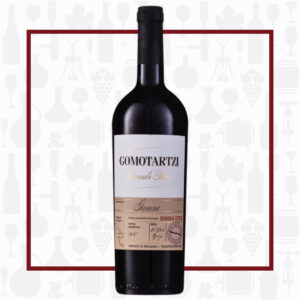Cellar Profile
Nestled along the banks of the Danube River, Bononia Estate is named for the ancient Roman Fortress that occupied the spot now known as the town of Vidin, where Roman armies brought vines for the cultivation of wine grapes. After careful soil analysis, the area was re-planted to grape in 2013 and the first vintage was produced in 2016. The Danube River appellation of Bulgaria is a moderate to cool region, with warm, dry days and cold evenings during the growing season. This large diurnal shift, coupled with breezes from the Danube, allows for ecological viticulture. Utilizing organic practices in tandem with technological advances and a keen eye for sustainability, Bononia Estate crafts nervy, fruit-forward and balanced wines, focusing on Chardonnay, Sauvignon Blanc, Cabernet Sauvignon, Cabernet Franc and the exciting, vibrant, autochthonous local varietal, Gamza. Bulgarian wine has long been eschewed by “serious” wine drinkers as cheap, cheerful and forgettable. However, Bononia Estate is part of the modern landscape of Bulgarian winemaking, with a focus on fine wines as opposed to bulk production. The wine world is beginning to take notice!
Region
There are only two wine growing regions in Bulgaria: the Thracian Lowlands and the Danubian Plain. The latter lies south of the iconic Danube River, with the Black Sea to the East and Serbia and Macedonia to the West. The region enjoys as many sunlight hours during the growing season as Northern Italy and Portugal, allowing for full ripening of both international and indigenous varieties. The movement of the Danube River, as well as the influence of the Black Sea, moderate heat during the day and keep the evenings cool, ensuring brilliant acid levels in the wines. The yields are remarkably small in Bulgaria, with an average of only 4.3 tons/ha. By comparison, the US averages 18 tons/ha. Jancis Robinson has noted the exceptional potential of this northwestern part of Bulgaria and the wine world is starting to pay attention.
Vineyard
Planted in 2013 utilizing the Guyot training system, these vineyards are strategically placed just south of the Danube, along its banks. The fast flowing water accompanying breezes keep the grapes cool and dry during the growing season. The soil has great drainage and is composed of dark loam created by the ancient forests surrounding the region. These are true cool climate vineyards, so canopy management is key to ensuring the grapes get enough sunlight.
Varieties
Also known as Kadarka elsewhere in the Balkans, Gamza has been around since antiquity and is grown mostly in Northwest Bulgaria. This autochthonous grape has thin skins, so is prone to rot and mold. This requires it to be planted in windy and hilly areas where the grapes will be dried and the air will not be as humid. This is why it is perfectly suited to the area around Vidin where Bononia lies. Gamza wines are medium-bodied, fresh and lively, with low to medium tannin levels. Stylistically, they are often compared to Cru Beaujolais or Oregon Pinot Noir.
Winemaking
Hand-harvested, sorted and de-stemmed. After a lengthy maceration on the thin skins, the grapes are racked into stainless steel to complete fermentation with selected yeasts. After fermentation is complete, the wine is transferred to new French oak barriques for 4 months of aging.
Tasting Notes
Aromas of crushed cherries, raspberry, and damson, along with baking spices. Flavours of cherry, strawberry, cinnamon, oak vanillins and pomengranate are all balance by nervy acidity and a touch of soft tannins. Lightly chill, as you would a good Beaujolais and enjoy with roast pork or grilled portobello mushrooms with goat cheese.

 info@buyersandcellars.ca
www.buyersandcellars.ca
info@buyersandcellars.ca
www.buyersandcellars.ca